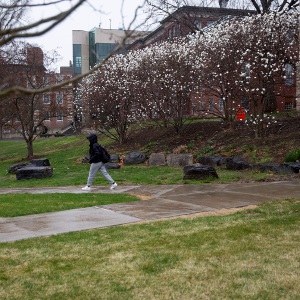Editorial: Vermont’s rash plan for database of police calls
| Published: 02-06-2023 9:53 AM |
For better and for worse, ours is a data-driven society. At very worst, we are a society driven crazy by data. Witness the Vermont Department of Public Safety’s new initiative to curb crime by creating a public dashboard identifying communities with high volumes of calls to police — so-called “hot spots.”
As VtDigger reported last month, the department intends to make its map of high-crime hot spots available to the public within the next 60 to 90 days, starting with still screenshots. The plan is to make it interactive eventually, all in the interests of “transparency.” Not apparent is exactly how this information would reduce criminal activity once it was in the hands of the public. By encouraging vigilantes to target high crime areas and take matters into their own hands?
Beyond that, one very obvious flaw is that the number of calls made to police does not necessarily correspond to actual criminal activity. Some calls are unfounded; many others may be reporting the same, rather than separate, incidents; a few might be simple harassment of people the caller doesn’t like.
So why not produce a dashboard that shows arrests and/or convictions that result from those calls? Because, according to Public Safety Commissioner Jennifer Morrison, the goal is not accuracy, but speed. “It’s not perfect data, and we’re not searching for perfect,” she said. “We’re . . . more focused on as close to real-time as possible. If you wait for some of these datasets to be fully vetted, and as accurate as possible, you’re talking about a three- or four-month lag, and that’s not exactly what we’re aiming for.”
The rationale for speed above accuracy? “In terms of making a choice about going out to dinner in Barre, or whatever, it allows people to make informed choices based on the reality of what’s being reported in that community,” Morrison said.
But not actually. That’s because the brightest hot spots may simply reflect concentrations of population. According to VtDigger, a screenshot released by the department depicted the Burlington metro area as the hottest of hot spots, with 763 calls in the prior six months. Turns out, though, that when it comes to police calls per capita, Rutland, Barre and Bennington all had more than Burlington.
But what’s the harm, beyond the waste of whatever resources it takes to produce the dashboard? Potentially, plenty. The most obvious one is conveying to the public the impression that crime is rampant, when in actuality Vermont remains among the very safest states in the country. Peace of mind is a high value in our book, and it depends to a great extent on the public having an accurate assessment of risk.
A second potential harm is that these data-derived hot spots will be targeted by police for the kind of enforcement that has resulted in abuses throughout the country. “Reliance on data from calls to police provides a limited view of where crime occurs, as it can reflect biased fears around who is dangerous or even intentional animus,” according to a 2021 report from the Brookings Institution.
Article continues after...
Yesterday's Most Read Articles
 Zantop daughter: ‘I wish James' family the best and hope that they are able to heal’
Zantop daughter: ‘I wish James' family the best and hope that they are able to heal’
 James Parker granted parole for his role in Dartmouth professors’ stabbing deaths
James Parker granted parole for his role in Dartmouth professors’ stabbing deaths
 2024 Upper Valley high school softball guide
2024 Upper Valley high school softball guide
 Art Notes: After losing primary venues, JAG Productions persists
Art Notes: After losing primary venues, JAG Productions persists
 Chelsea Green to be sold to international publishing behemoth
Chelsea Green to be sold to international publishing behemoth
In this context, it is important to note that Tyre Nichols was arrested and brutally beaten by members of a special unit of the Memphis police department called Scorpion, which was created expressly to target, in the words of the police chief in May of last year, “some of the hot-spot areas where we saw frequent aggravated assaults and high crime.”
Morrison told VtDigger that the ultimate goal of the Public Safety Department’s effort is to identify communities that require utilization of more resources, whether that means expanding the police force or improving social services. How that goal is furthered by a rush to publicize unrefined and possibly misleading data is a mystery that perhaps the Department of Public Safety could try to solve.

 Editorial: Chris Sununu’s moral vacuum
Editorial: Chris Sununu’s moral vacuum A Yankee Notebook: An inevitable and terminal move
A Yankee Notebook: An inevitable and terminal move Editorial: Gambling tarnishes America’s sporting life
Editorial: Gambling tarnishes America’s sporting life By the Way: A white nationalist’s many mistruths
By the Way: A white nationalist’s many mistruths
